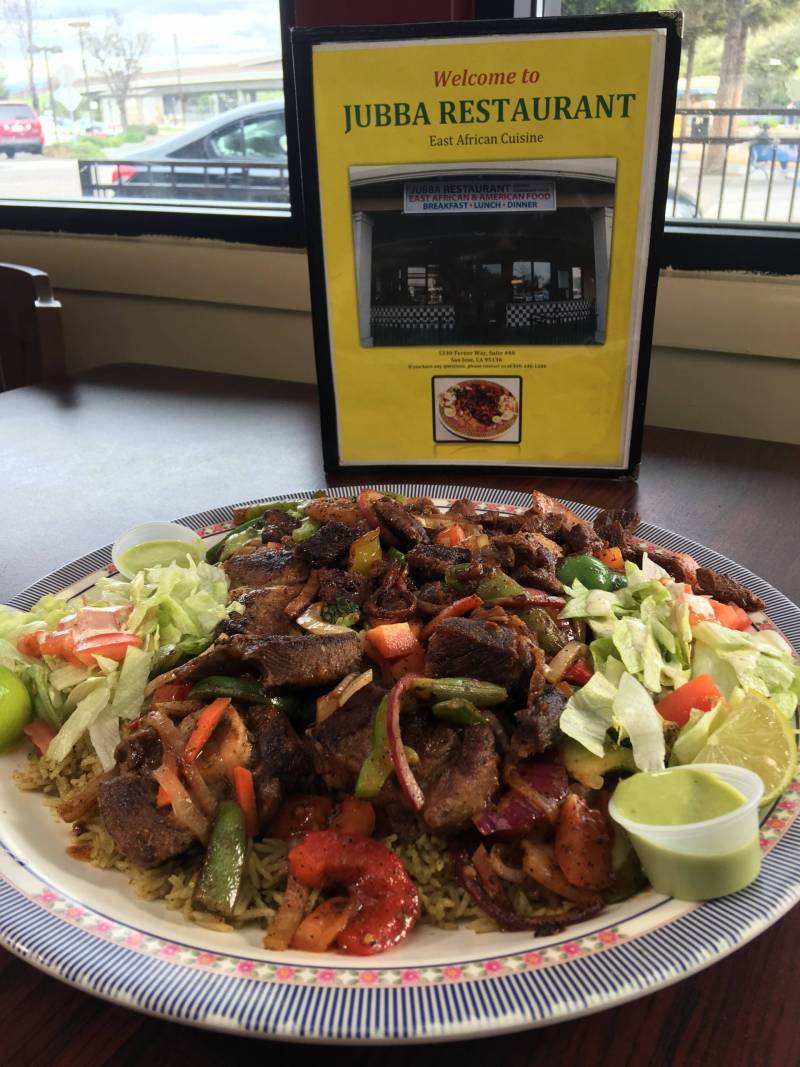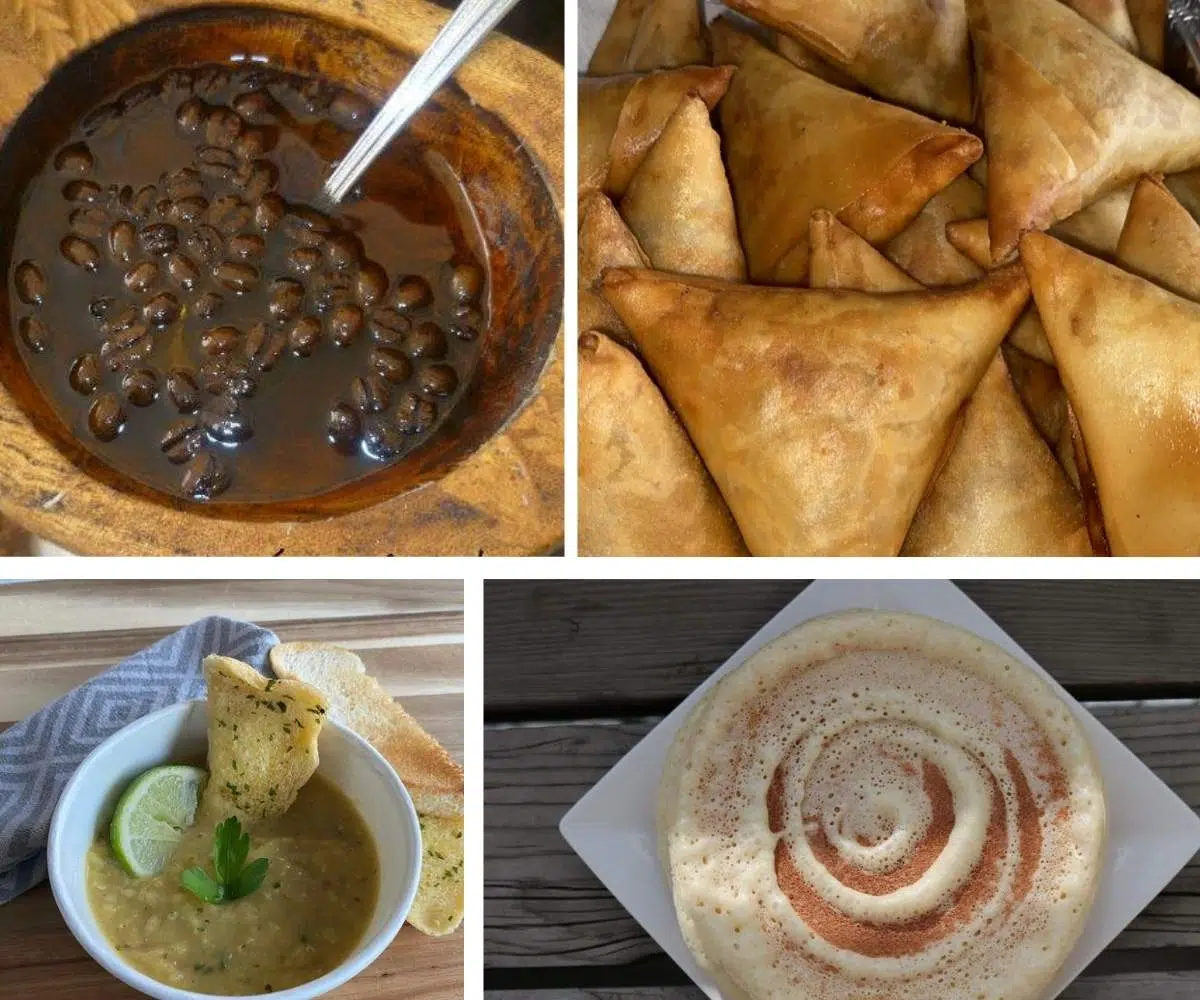From Staple Cuisines to Unique Specialties: Unraveling the Diverse and Vibrant World of Somali Food

Standard Somali Staples
If you desire to experience authentic Somali cuisine, you have to frequently delight in traditional Somali staples. These staples develop the structure of Somali cooking and display the abundant social heritage of the Somali people.
An additional staple is "baasto," a flavorful pasta meal that is commonly appreciated in Somali homes. Baasto is generally made with pastas or linguine noodles, cooked up until tender and afterwards blended with a fragrant sauce made from tomatoes, onions, garlic, and a mix of typical Somali flavors (Somali food). This dish is frequently offered with a side of maraq, a deliciously spiced broth that adds deepness and intricacy to the meal
Finally, "bariis" or rice is a staple that is deeply ingrained in Somali food. Bariis is usually prepared with fragrant flavors such as cardamom, cinnamon, and cloves, offering it a fascinating fragrance and preference. It is commonly offered with a selection of meat or veggie stews, creating a hearty and rewarding meal.
Flavors From the Sea: Somali Seafood Delicacies

Another favored is Muqmad, a dried out fish meal that is commonly enjoyed as a treat or made use of as an active ingredient in various other meals. The fish is cured with salt and seasonings, providing it a somewhat appetizing and full-flavored taste.
Lahoh with maraq is a conventional Somali pancake offered with an abundant seafood stew. The pancake is soft and squishy, while the stew is made with a combination of shellfishes, fish, and veggies, simmered in a tasty brew. This recipe is a true representation of the seaside tastes found in Somali cuisine.
Whether it's smoked lobster, spicy shrimp curry, or zesty calamari, Somali seafood specials are a must-try for any kind of fish and shellfish enthusiast. The freshness of the active ingredients, integrated with the fragrant flavors, produce a symphony of flavors that will carry your preference buds to the shores of Somalia. So, don't miss the opportunity to savor the ocean's plentiful treasures when discovering Somali food.
Fragrant natural herbs and unique spices
Discover the alluring selection of tastes in Somali cuisine with the use of an impressive range of exotic seasonings and fragrant herbs. Somali food is known for its strong and vibrant tastes, and these seasonings and natural herbs play a crucial duty in developing the distinct taste that sets Somali cuisine apart.
One of the most typically made use of flavors in Somali food preparation is cumin. Turmeric extract, with its lively yellow shade and light flavor, is an additional staple in Somali food.
Cardamom, a great smelling spice with a tip of citrus, is likewise commonly made use of in Somali cooking. It adds a distinct and fragrant touch to both pleasant and savory recipes. Other preferred seasonings consist of cinnamon, cloves, and coriander, which are made use of to include heat and intricacy to numerous recipes.
Fragrant herbs like mint, cilantro, and parsley are additionally crucial active ingredients in Somali cuisine. They are used to garnish dishes, presenting quality and a ruptured of taste. These natural herbs are often added to sauces, salads, Discover More and meat dishes, boosting the total taste and aroma.
With the use of these fragrant natural herbs and exotic spices, Somali cuisine uses a alluring and really one-of-a-kind eating experience. The mix of flavors creates an unified balance that is both remarkable and enjoyable. Whether you're appreciating a conventional Somali stew or a savory rice dish, the flavors and natural herbs used in Somali food preparation are certain to leave an enduring impact on your taste buds.
Influences From Arab, Indian, and European Cuisines
Arab, Indian, and European cuisines have substantially affected the varied and dynamic world of Somali food. Over the centuries, Somalia's tactical place on the Indian Sea trade paths has permitted an abundant exchange of cultural and culinary traditions with surrounding Arab and Indian communities, in addition to European colonial powers. These communications have actually left a long lasting influence on the Somali cooking landscape, causing a combination of flavors and methods that make Somali cuisine truly special.
One of one of the most significant impacts can be seen in the substantial use flavors in Somali cooking. Arab and Indian seasonings such as cumin, coriander, cardamom, cinnamon, and cloves are frequently made use of to include depth and complexity to Somali meals. The intro of these flavors has not only enhanced the tastes yet has also added to the dynamic and aromatic nature of Somali cuisine.
European influences can be traced back to the colonial age when Somalia was under the control of different European powers, consisting of the Portuguese, British, and Italians. These early american interactions brought brand-new components and cooking approaches to Somalia. As an example, pasta recipes like "baasto" (Somali pasta) and "sabayad" (a Somali flatbread) are clear instances of Italian influence.
Celebrating Food in Somali Culture
1. Celebrating food is try this out an important component of Somali society, where communal meals and joyful celebrations are treasured customs. Food plays a main duty in bringing people together, fostering a feeling of neighborhood and link. Whether it's a wedding event, a spiritual holiday, or a simple household celebration, Somali individuals take immense pride in their food and utilize it as a method to commemorate and reveal their social identity.

In enhancement to the delicious food, the act of sharing a dish is deeply meaningful in Somali society. It represents friendliness, generosity, and the significance of community. Somali food. Resting down together, frequently on a floor covering or a common plate, and eating promotes a feeling of unity and strengthens bonds between friends and family
Furthermore, food is additionally a means to honor and bear in mind enjoyed ones who have passed away. Throughout unique occasions, such as the Islamic vacation of Eid al-Fitr, Somalis prepare standard desserts right here called xalwo as a means of paying tribute to their forefathers and keeping their memory to life.
Final Thought
Finally, Somali food uses a vibrant and diverse cooking experience. From conventional staples to unique specializeds, the food is abundant in flavors and showcases the country's social influences. With a range of fish and shellfish specials, fragrant herbs, and spices from Arab, Indian, and European cuisines, Somali food is a celebration of practices and tastes. Whether you're checking out the staple dishes or venturing right into the globe of exotic specialties, Somali cuisine is sure to entice your preference buds.
If you want to experience genuine Somali food, you should frequently indulge in traditional Somali staples.To genuinely immerse yourself in the diverse and vivid globe of Somali food, you should frequently delight in the beautiful tastes of Somali fish and shellfish specials. Whether you're enjoying a typical Somali stew or a delicious rice recipe, the flavors and herbs made use of in Somali cooking are certain to leave an enduring perception on your preference buds.
These interactions have actually left a long lasting impact on the Somali cooking landscape, resulting in a blend of tastes and methods that make Somali cuisine genuinely one-of-a-kind.
Pasta dishes like "baasto" (Somali pasta) and "sabayad" (a Somali flatbread) are clear instances of Italian influence.